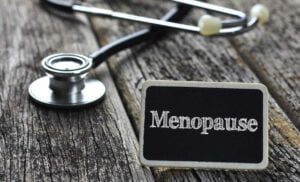Menopause, a natural phase marking the end of a woman’s reproductive years, brings about a myriad of changes, both hormonal and physical. One common but often overlooked symptom is paresthesia, characterized by tingling, numbness, and a “pins and needles” sensation. This unsettling symptom can impact daily life and requires thoughtful consideration for effective management. In this blog, we explore the causes of paresthesia during menopause and delve into practical and holistic treatment strategies to bring relief.
Contents
What Is Paresthesia?
Paresthesia is a term used to describe abnormal sensations in the body, often characterized by tingling, numbness, or a “pins and needles” feeling. It occurs when there is dysfunction in the nerves that send signals between the body and the brain. During paresthesia, individuals may experience sensations like tingling or a lack of feeling in certain parts of the body, commonly in the hands, feet, or extremities. Paresthesia can be temporary or chronic and is associated with various factors, including nerve compression, poor circulation, or hormonal changes. While it is not typically a serious condition, it can be uncomfortable and impact daily activities. Understanding the underlying causes of paresthesia is crucial for effective management and seeking appropriate medical guidance if the symptoms persist or worsen.
Why Does Menopause Cause Paresthesia?
During menopause, the body undergoes significant hormonal changes, particularly a decline in estrogen levels. These hormonal shifts can have an impact on the nerves throughout the body. Estrogen plays a role in maintaining nerve function and protecting nerve tissue. As estrogen levels decrease, the nerves may become more vulnerable to dysfunction. Paresthesia, characterized by sensations like tingling, numbness, or a “pins and needles” feeling, can occur as a result.
The hormonal fluctuations during menopause may disrupt the normal communication between nerves, leading to abnormal sensations in different parts of the body. While not all women experience paresthesia during menopause, the hormonal connection highlights one of the potential factors contributing to this symptom during this transitional phase in a woman’s life. Seeking guidance from healthcare professionals can help manage and alleviate these symptoms effectively.
Treatment Strategies For Paresthesia During Menopause
Managing paresthesia during menopause involves a combination of medical and lifestyle interventions. Here are several treatment strategies to consider:
- Hormone Replacement Therapy (HRT): Hormone replacement therapy, under the guidance of a healthcare professional, may be considered to address hormonal imbalances contributing to paresthesia.
- Vitamin and Mineral Supplementation: Ensuring an adequate intake of vitamins and minerals, particularly B vitamins and calcium, can support nerve health. Supplements may be recommended based on individual needs.
- Acupuncture: Acupuncture, a traditional Chinese medicine practice, involves inserting thin needles into specific points on the body. Some women find relief from paresthesia through acupuncture, believed to balance energy flow.
- Stress Management Techniques: Practice stress-reducing techniques such as deep breathing, meditation, or yoga. Stress management can positively impact paresthesia symptoms, as stress may contribute to their occurrence.
- Topical Treatments: Consider using topical treatments like creams containing menthol or capsaicin. These may provide temporary relief from paresthesia symptoms. Consult with a healthcare professional before using any topical treatments.
- Wear Comfortable Clothing: Choose loose-fitting, comfortable clothing to avoid constriction and pressure on nerves, especially in areas prone to paresthesia.
- Maintain Healthy Posture: Practice good posture to minimize nerve compression. Ergonomic adjustments in workspaces and daily activities can reduce the risk of exacerbating paresthesia.
- Medical Consultation: Consult with a healthcare professional to determine the underlying cause of paresthesia and develop a personalized treatment plan. This may involve diagnostic tests and targeted interventions.
When To Consult A Doctor?
It’s advisable to consult a doctor if you experience persistent or severe paresthesia during menopause. While occasional tingling or numbness may not be a cause for immediate concern, the following scenarios warrant medical attention:
- Duration of Symptoms: If paresthesia persists for an extended period without improvement or becomes progressively worse, it’s essential to seek medical advice.
- Frequency and Intensity: If episodes of tingling, numbness, or “pins and needles” sensations occur frequently and with increasing intensity, a medical evaluation is warranted.
- Unexplained Symptoms: If paresthesia occurs without an apparent cause or is not related to a known factor (such as pressure on nerves due to poor posture), consulting a doctor is important for further investigation.
- Accompanying Symptoms: If paresthesia is accompanied by other concerning symptoms, such as weakness, difficulty walking, loss of coordination, or changes in bowel or bladder function, urgent medical attention is needed.
- Impact on Daily Life: If paresthesia significantly interferes with daily activities, disrupts sleep, or affects overall quality of life, it’s advisable to consult a healthcare professional for a thorough assessment.
- Medical History: Individuals with pre-existing medical conditions, such as diabetes, peripheral neuropathy, or cardiovascular issues, should be especially vigilant and consult a doctor promptly if they experience paresthesia.
- New or Worsening Symptoms: If you are going through menopause and experience new or worsening symptoms of paresthesia, it’s important to discuss these changes with a healthcare provider.
Lifestyle Strategies For Managing Paresthesia During Menopause
In addition to medical interventions, adopting certain lifestyle strategies can contribute to the management and alleviation of paresthesia during menopause. Here are lifestyle approaches to consider:
- Maintain a Healthy Diet: Eat a balanced diet rich in fruits, vegetables, whole grains, and lean proteins. Ensure an adequate intake of B vitamins, especially B6 and B12, which play a role in nerve health.
- Stay Hydrated: Drink plenty of water to stay well-hydrated. Proper hydration supports nerve function and overall health.
- Regular Exercise: Engage in regular physical activity to promote circulation and support nerve health. Activities such as walking, swimming, or yoga can be beneficial.
- Limit Alcohol and Caffeine Intake: Reduce the consumption of alcohol and caffeine, as these substances can potentially exacerbate paresthesia symptoms.
- Quit Smoking: If applicable, quitting smoking is beneficial for overall health, including nerve function. Smoking can contribute to poor circulation and worsen symptoms.
- Temperature Management: Avoid extreme temperatures, as both very cold and very hot environments can trigger or worsen paresthesia. Dress appropriately for the weather.
- Supportive Footwear: Wear comfortable and supportive shoes, especially if paresthesia affects the feet. Proper footwear can help reduce pressure on nerves.
- Massage and Stretching: Gentle massage and stretching exercises may help alleviate muscle tension and improve overall flexibility, potentially reducing paresthesia symptoms.
Conclusion
In conclusion, treatment for paresthesia during menopause involves a multifaceted approach that encompasses both medical interventions and lifestyle strategies. The tingling, numbness, and “pins and needles” sensations that often accompany this phase can be effectively managed through hormone replacement therapy, vitamin supplementation, regular exercise, and stress management techniques. Lifestyle adjustments, such as maintaining a healthy diet, staying hydrated, and adopting ergonomic practices, play a crucial role in supporting nerve health and reducing the impact of paresthesia on daily life.
By integrating these treatment strategies and making informed choices, women can effectively manage paresthesia, enhancing their overall quality of life and embracing the transition through menopause with resilience and vitality.





